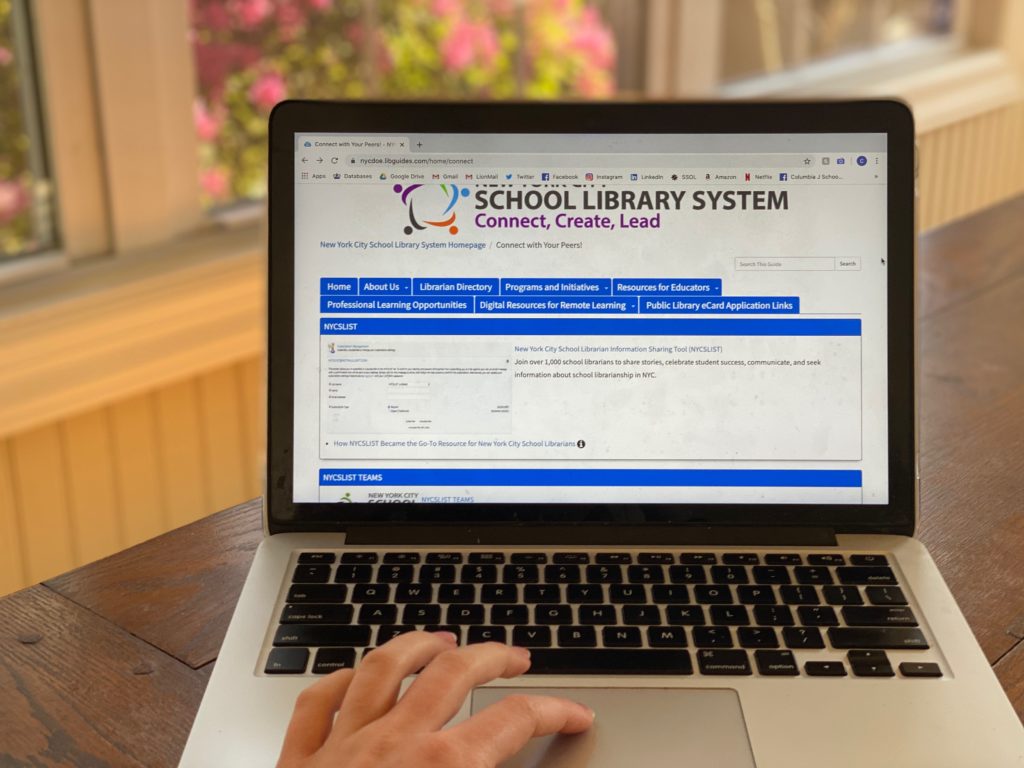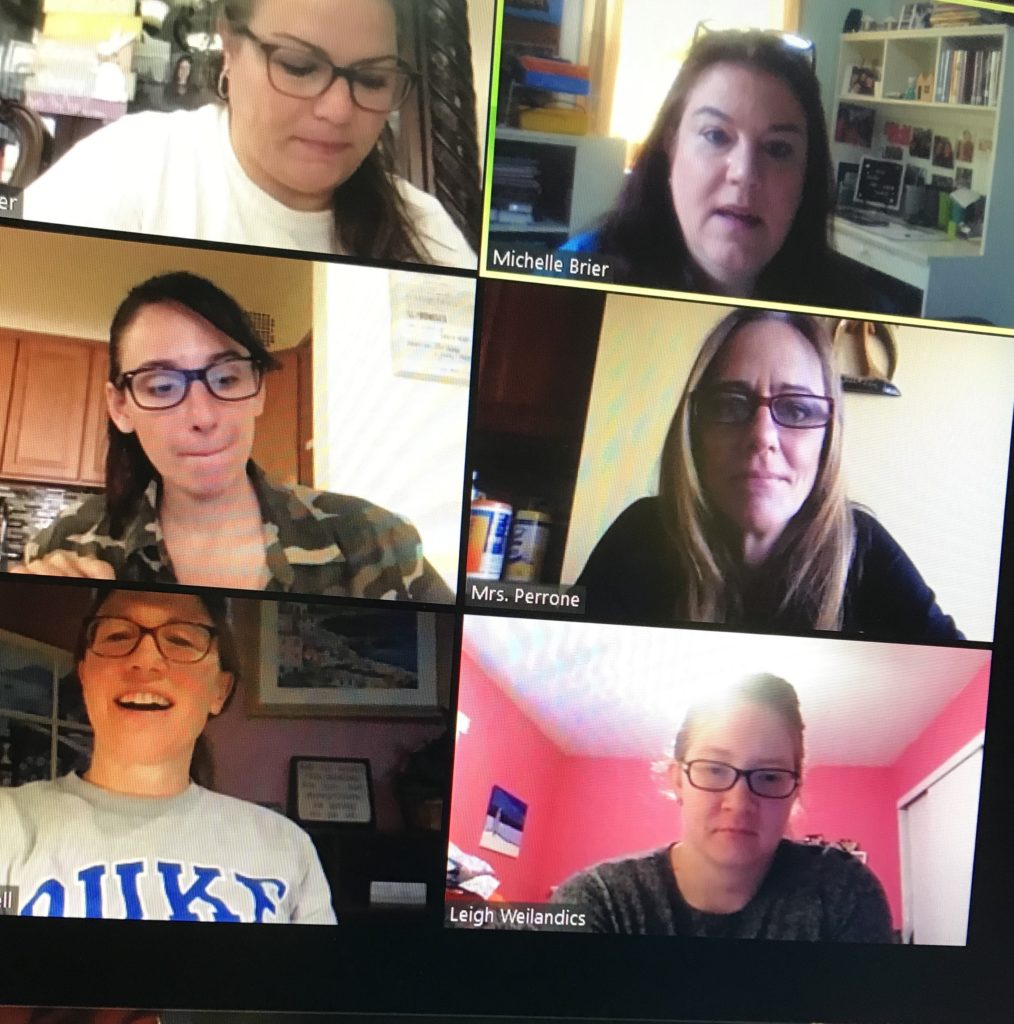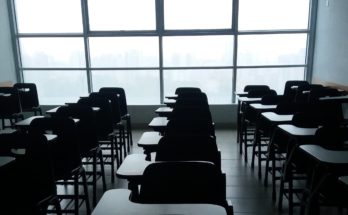By Cayla Bamberger and Jessica Campbell

Photo credit: Cayla Bamberger
Melissa Jacobs was the sole librarian at her public elementary school in Brooklyn in her first library job. That was two decades ago, before social media, and Jacobs craved a community with whom she could share practices and ideas.
“There were no communication tools to connect with librarians in other buildings, so I was the one and only,” Jacobs said. ”I felt very isolated.”
When she stepped into her current job as the director of library services at the city’s education department in 2004, Jacobs’ first project was to design the virtual community that she had imagined: an electronic mailing list called The New York City School Librarian Information Sharing Tool, or “NYCSLIST.” Seventeen years later, the listserv has roughly 1,200 members.
In mid-March, when COVID-19 shuttered schools, librarians faced a thoroughly new kind of isolation. To conquer it, the small but mighty army of librarians took to their listserv with such force—sharing free resources, linking to author readings, questioning copyright laws—that they surpassed its daily message threshold, crashing it.
In a recent newsletter circulated by the listserv, one librarian described the initial panic of the quarantine: “As an unabashed bibliognost, one of my first thoughts of remote learning was…..WHAT ARE THE KIDS GOING TO READ!?!?!!?”
The president of New York City School Librarians’ Association, Arlene Laverde, said she shared in the anxiety: “On Sunday night, when the mayor announced that schools would be closing, our listserv exploded with, ‘What can we do to support our students? What can we do to support our teachers?’” It got to the point where Laverde was scared to look at her email; she was so overwhelmed by all it would take to support public school families and teachers.
Jacobs increased the daily message allowance to 500 and the listserv quickly recovered from the crash, but the momentum of an extraordinarily active exchange persists. The online network has been more essential than ever for librarians—and through them, for their schools and students.
“We get announcements every day, several a day,” said Doreen Wright, a librarian on the Richard R. Green campus in the Bronx. At the thought of schools without access to the listserv during remote learning, Wright said, “Oh, man.” A beat later, she added: “I think that they are probably not as equipped with the resources that have been disseminated.”
Jacobs noted that the network has helped her department be nimble in disseminating information. “If you’re not on the listserv, you’re not connected to the office, and the office is a lifeline for you,” Jacobs said.
For example, when the New York City School Library System developed a guide to reimagine the role of school librarian during remote learning, it went out through the listserv. Or, when school librarians crafted articles about their experiences with online education for a department newsletter, it, too, was distributed via email. Most of all, though, the mailing list offers a steady stream of resources.
An unofficial listserv liaison, Wright has regular meetings with school leadership to share the tips and tools she finds online. “Principals are already so very busy with trying to figure out how to guide us,” she said, “So they’re missing out on the free resources.”
This is where Wright steps in, armed with the network’s suggestions. For example, Wright discovered a free book-publishing platform for children and teens to document their experiences during the pandemic. She posted a form to Google Classroom to recruit interested students, and she is gathering their stories into a collection that will eventually be published.
Wright also collaborates directly with classroom teachers, sitting in on virtual classes and providing students with relevant resources from the email chain. This teamwork is all the more meaningful in the age of COVID-19, as teachers adjust to remote education.
“Many vendors are making subscription-based databases available for free,” said Debra Kachel, who researches school librarians, “but only librarians know which ones fit their school’s curricula and the needs of their students.” This, she described, as “the role of the librarian as a curator and ‘chief information officer’ of the school.”
Also on the listserv: Scholastic is offering free online courses. Keep busy by watching Mei and Tian’s Giant Panda Cam. Free digital curriculum from the New York Historical Society. Instructions for logging on to NOVELny. Drawing classes with Mo Willems.
The online network also has an archive, so librarians just joining during the pandemic can look through past emails to find older suggestions.
While conversations about resources are plentiful, Jacobs, in her continued role as the mailing list’s moderator, is careful to keep vendors out. This makes the listserv a safe space not only for active school librarians, but for public librarians, graduate students who are prospective librarians, and even retired librarians who may have left their schools but not the community.
Christina Gavin, a school librarian in the Bronx, also sees the listserv as a kind of librarian’s librarian; a place where she can turn if she needs help.
“If you have a question, you’re not just sitting by yourself saying, ‘What am I going to do?’ You have a community of support through the listserv,” Gavin said.

Photo credit: Michelle Brier
Meanwhile, the listserv has continued to serve its original purpose, which is all the more relevant now: to make librarians feel less isolated. There have been several “Librarian Chat and Chews” organized through the email chain each week, including recent sessions on fashioning homemade masks.
During the annual school librarian conference, typically held each fall in Citi Field, Jacobs has witnessed people who have only known each other as an email signature recognize each other’s name badges and build real-life relationships. The connections nurtured via email and strengthened in person have softened the shock of remote learning.
“What’s happened in the last few weeks, having that connection to everyone, helped us all get through it,” Jacobs said.
Additional reporting by Claire Bryan.



